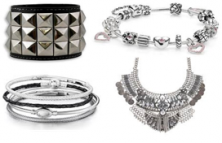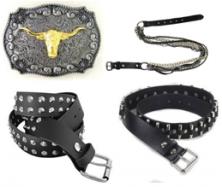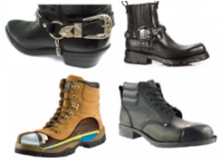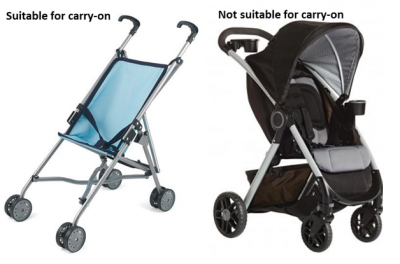Be prepared for security screening and arrive early where possible: 90 minutes for domestic flights and three hours for international.
Anticipated peak times at security screening
If you want to proceed through security without being delayed:
For international flights:
Check you do not have anything in your carry-on bag that could be used to stab, slice or hit as these sorts of items are forbidden to take into the cabin of an aircraft. This restriction impacts on a number of everyday items.
If you wear clothing, belts or footwear that have significant quantities of metal they may trigger an alarm when you go through the walk through metal detector and you will be subject to additional screening. Refer to the “Clothing and accessories” table to see what items would better be off packed in your luggage.

Do not wear clothes with metal decorations; put them in your checked luggage. If you wear these items during screening you will be:
Note: if you are wearing a corset tell the AvSec officer who will need to sight it, this will be done in private.

Metal accessories including jewellery should not be worn during security screening and it is recommended you put them in your bag when going through screening. It is not advisable to put loose jewellery in trays. If you wear jewellery during screening you may:

Do not wear belts with large buckles or metal decorations. If you do you may be asked to remove them and place them into an x-ray tray. If you wear these belts or buckles during screening you may:
Note: Most belts will not set off the walk through metal detector alarm.

Do not wear steel-cap footwear or those with metal decorations through security screening. If you wear any footwear that cover the ankles, including those without metal adornments, you may be asked to remove them and place them into an x-ray tray. If you wear this type of footwear during screening you may:
You can put your footwear on once you have been through security.
 If you are travelling with a young child take a push chair that is suitable for carry-on. A push chair that is suitable for carry-on is collapsible and when collapsed is no wider than 60cm and no higher than 40cm so it can fit into the x-ray machine.
If you are travelling with a young child take a push chair that is suitable for carry-on. A push chair that is suitable for carry-on is collapsible and when collapsed is no wider than 60cm and no higher than 40cm so it can fit into the x-ray machine.
At security screening you will need to remove your child from the push chair and carry them through the walk-through metal detector even if your child is asleep.
If you are travelling on an international flight with a young child, items to be consumed by that child during the flight such as food, drinks, toiletries and medicine are exempt from the volume limits. For more information go to Powders, liquids, aerosols and gels – travelling with a young child.
You are able to take medicine with you as carry-on for domestic flights without restriction. For international flights if the volume of medicine you need exceeds allowable limits you will need to present information from a registered medical practitioner that you need the medicine during the flight. For more information refer to Powders, liquids aerosols and gels – medical exemption.
If you are travelling with homeopathic medicine that you don’t want x-rayed you can request it be inspected by hand. Homeopathic medicine carried on international flights is not exempt from the liquid, aerosols and gels volume limits.
If you are required to travel with a medical device you will need to provide evidence from a registered medical practitioner that you need access to the device during the flight to treat a medical condition.
If a device is being worn [e.g. back brace] or is physically attached to you [e.g. insulin delivery system], inform the screening officer who will arrange for you to be taken into a search area, out of the view of others, for an officer who is the same gender as you to view the device.
The carriage of other medical equipment including nebulisers or Continuous Positive Airways Pressure must be pre-approved by your airline.
For more information go to Travelling with medical items.
Learn about the hidden disabilities sunflower scheme.
Learn more about navigating airport security screening for people living with diabetes [PDF 1.3 MB]
All passengers travelling in a wheelchair will be requested to vacate the wheelchair and proceed through the walk through metal detector either with or without the assistance of a support person, if you are able to do so without harming the person seated, to allow the wheelchair to be inspected. If you are travelling with a wheelchair or other mobility device you will need approval from your airline for its carriage.
All electrical and electronic devices will be screened by x-ray before they will be allowed onto the aircraft. You need to remove any device [larger than a cell phone], including all cameras, from your bags and place them in an x-ray tray. While most camera film will be unaffected by x-rays, film over 1600 ASA may be affected.
You may be asked to take your laptop or large electronic device out of your bag.
Please follow the officer’s instructions.
Before checking-in [PDF 590 KB]
Powders, liquids, aerosols and gels, and carry-on luggage restrictions flyer
Check-in and carry-on battery restrictions [PDF 780 KB]
Aviation Security Service uses CCTV to monitor and record security operations at security-designated airports. CCTV cameras are located in areas where Aviation Security Service undertake security measures including passenger bag-search areas for carry-on baggage and checked-in international baggage.
Signage advising of CCTV equipment will give notice of areas covered by such equipment.
If you have any questions about this topic, use our contact form, or email reception@avsec.govt.nz.